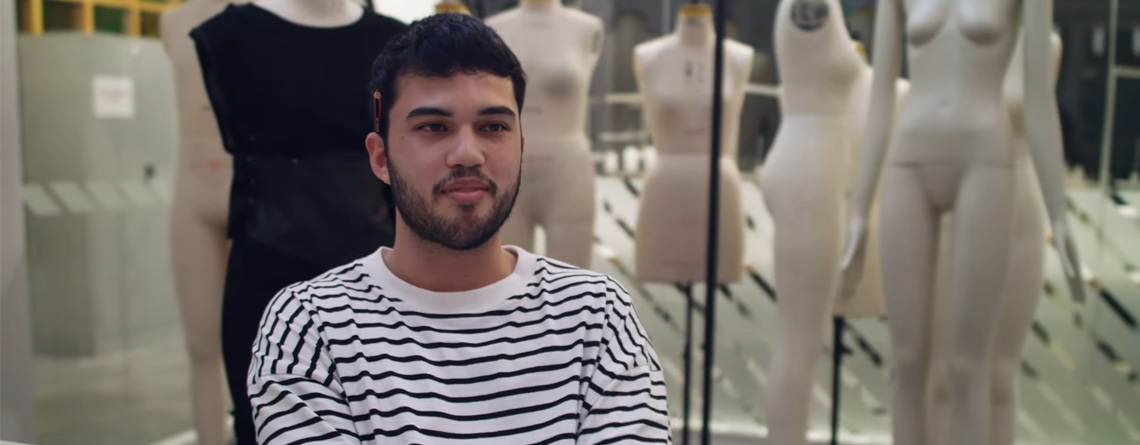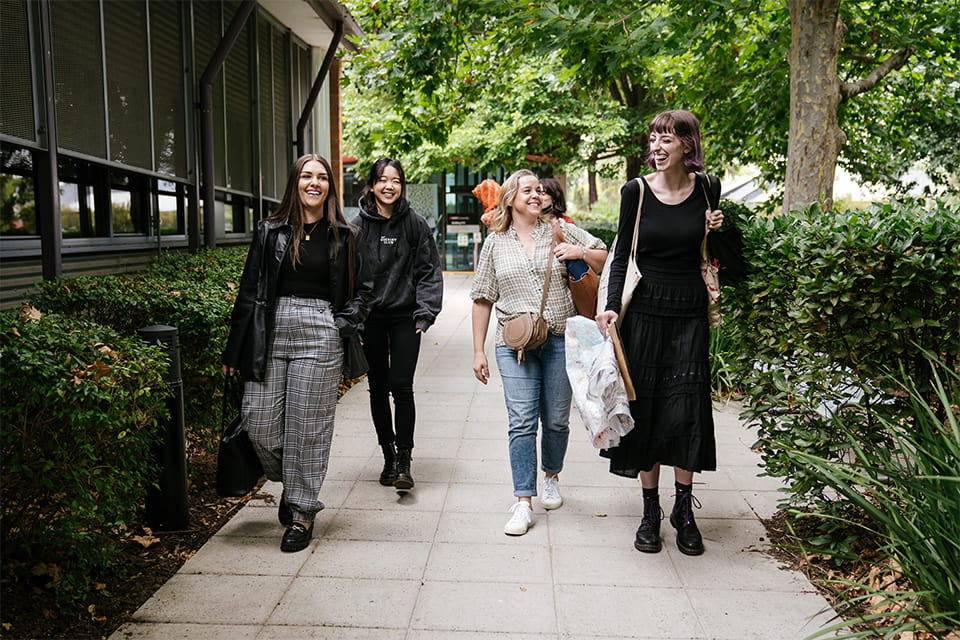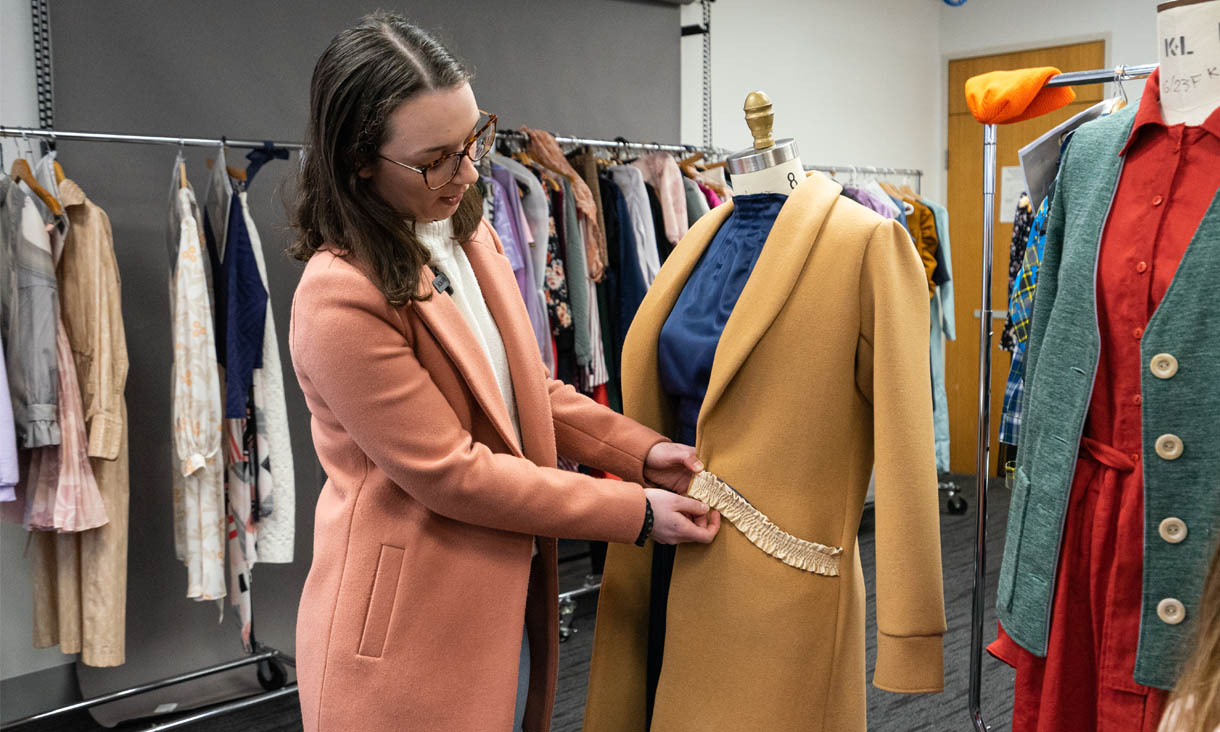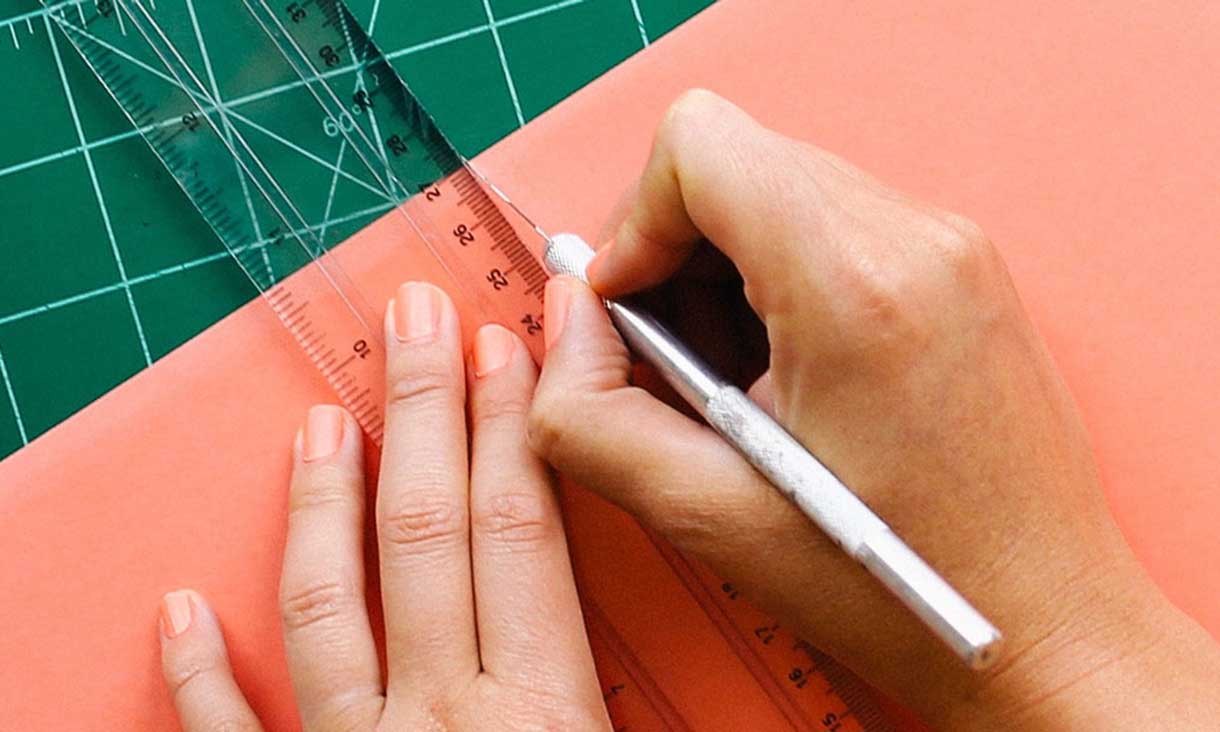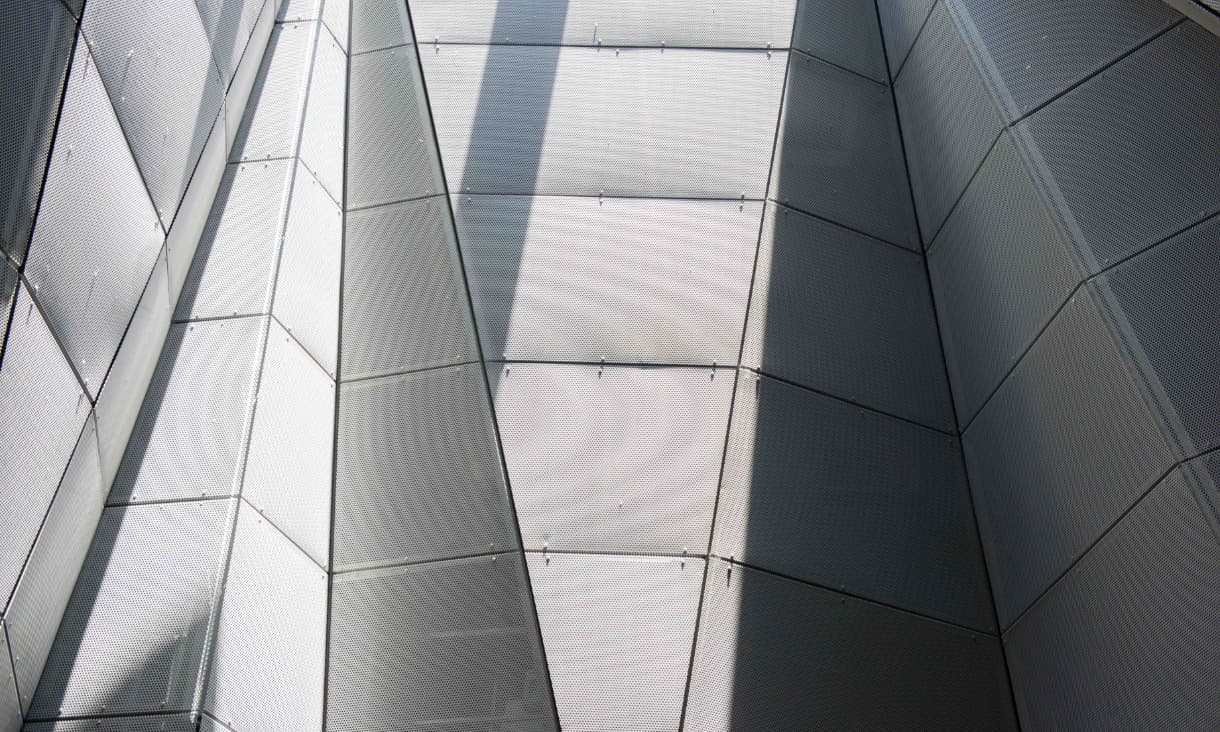[Start transcript]
[Music]
[Eliza]
Hey, I’m Eliza.
[Gemma]
And I’m Gemma.
[Eliza]
And where both second-year textile design students.
[Gemma]
And today, we’re going to give you a guided tour of our beautiful RMIT Brunswick campus. Come on [laughing].
[Eliza]
Brunswick is home to our School of Fashion and Textiles as well as other design courses like industrial and graphic design. So, we are a pretty creative bunch of people.
[Gemma]
The quad often holds events like concerts, stalls and free student union lunches. So, we get to intermingle amongst students and really build a sense of community.
[Eliza]
Here we are at RMIT Connect, which is the place to go for current students looking for advice on timetabling or enrolment.
[Gemma]
The friendly staff can also help with any tech support in foreign global experiences and University exchange programs. Plus, a lot more.
[Music continues]
The library is my favourite place to study, because it’s nice and quiet and there’s lots of natural light.
[Eliza]
And there are loads of other places to study around campus, whether it be outside or in any of the other buildings.
[Music continues]
This is one of my favourite spots on campus. It’s the print room where textile designers get to spend most of their time.
[Gemma]
It’s where we get to see all our designs come to life.
[Music continues]
We’re now in RMIT’s flagship Fashion Hub, which is a world-class facility.
[Eliza]
This is the exhibition space where third and final fashion and design students get to show off their glorious creations.
[Music continues]
[Eliza]
And this is one of the specialist machine rooms in the Fashion Hub.
[Gemma]
This is one of our fabulous workshop and maker spaces. The multidisciplinary workshop allows for fashion and takes product, graphic and industrial design students to come together and think around.
[Eliza]
They’re equipped with laser cutters, 3-D printing technology, hand machinery and a lot more. So, let’s take a look.
[Music continues]
[Gemma]
Brunswick is only 6 kilometres out of the city. And the Uni itself is a stone’s throw away from busy Sydney Road. Coming from Sydney myself, I reckon it’s one of the best spots in town.
[Eliza]
There’s tons of places to grab a quick bite to eat in between classes. And loads of local designers and makers have also set up shop here too.
Thank you for joining us on this tour of the beautiful Brunswick campus. We hope this has inspired you to join our creative community.
[Gemma]
And if you have any questions, please feel free to contact our friendly staff at Study at RMIT. And if you ever see Eliza and I on campus, come and say hi to us.
[Music]
[End transcript]



